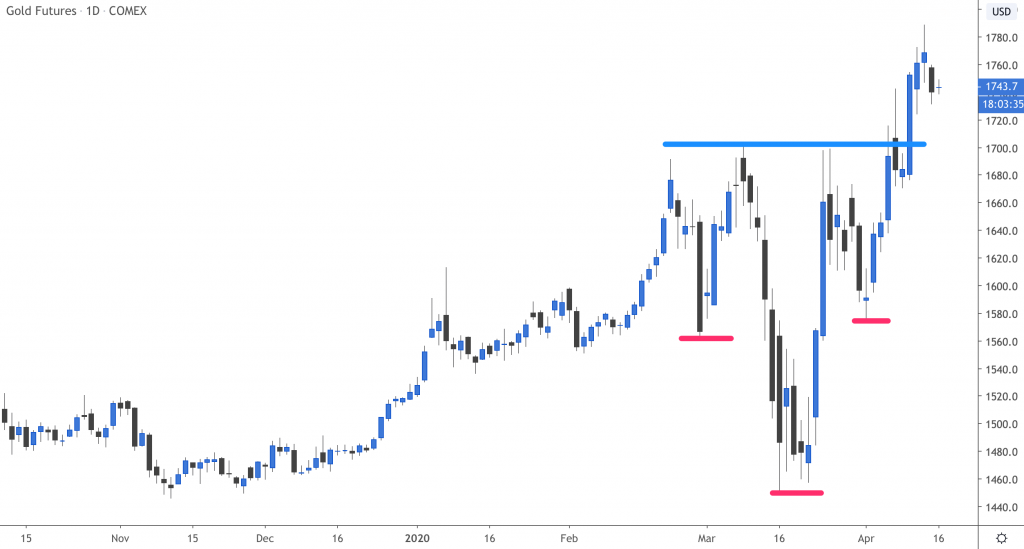Gold is rising as investors seek safety, but one expert says this is the price to watch for before buying the precious metal.
Gold has been surging lately as investors have flocked to the safe haven as fears rise over the scale of the economic damage caused by the coronavirus crisis.
On Wednesday, gold closed at $1,744 per ounce, a level not seen since 2011 and just 8% shy of the shiny metal’s all-time high of $1,888.70 reached on August 12, 2011.
Gold sank as the broader market melted down as the coronavirus pandemic began to spread rapidly last month, but since then, the precious metal is up more than 14%.
“I think it’s important to say now that the wind is very likely in gold’s sails,” said Rick Rule, president and CEO of Sprott, a U.S. investment manager specializing in precious metals, in a note to clients this week.
And with that wind, one expert says gold’s technical setup suggests the yellow metal can break past 2011’s record high.
“I love gold, and you need some in your portfolio,” said Bill Baruch, president of Blue Line Capital.
According to Baruch, gold’s chart shows “an inverse head and shoulders pattern – a beautiful technical pattern that played out through March into April and we’re now breaking out above.”

As shown in the chart above, an inverse head and shoulders pattern forms when an asset makes a low, then rises, then falls to a lower low, then rises again, then falls to a higher low than the first before climbing higher. The bullish pattern typically signals a bottoming and change in direction.
“I do believe gold over the rest of this year will get to $2,000,” Baruch said. “I think it should be in your portfolio. The massive liquidity injected by the Federal Reserve, it’s going to support asset prices like equities, but it’s also going to support gold.”
While gold at $2,000 would represent a nearly 15% gain in the precious metal, Baruch suggests investors wait to buy until the precious metal falls back to $1,700.
“There’s higher to go, but look to a move back to $1,700 as your buying opportunity,” Baruch said.